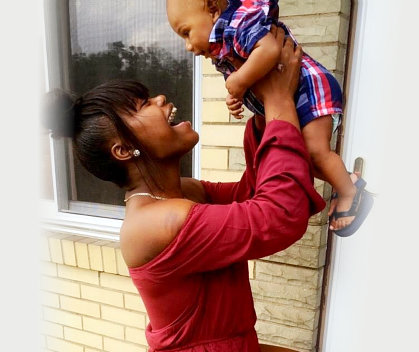
Did you know?
Women between the ages of 18 to 24 years old are most commonly abused by an intimate partner.
African-American women experience abuse at a rate of 35% higher than their white counterparts.
Source: https://www.thehotline.org/is-this-abuse/abuse-defined/
Domestic violence also referred to as intimate partner violence (IPV) or domestic abuse does not discriminate. Anyone of any race, age, sexual orientation, religion or gender can be a victim or perpetrator. It can happen to people who are married, living together or who are dating. It affects people of all socioeconomic backgrounds and education levels.
- 85% of domestic abuse victims are women according to the National Coalition Against Domestic Violence.
- 1 in 3 women and 1 in 4 men have been physically abused by an intimate partner. In addition, 1 in 5 women and 1 in 7 men have been severely physically abused by an intimate partner according to the National Coalition Against Domestic Violence.
- 3 women are murdered every day at the hands of a current or former intimate partner according to the National Coalition Against Domestic Violence.
- In Pennsylvania, 150 people die every year as a result of domestic violence. (Source: Pennsylvania Coalition Against Domestic Violence.)
- In 2015 and 2016, Allegheny County had more fatalities related to domestic violence than any other county in Pennsylvania. (Source: Pennsylvania Coalition Against Domestic Violence)
- Every 9 seconds in the US a woman is assaulted or beaten. (Source: National Coalition Against Domestic Violence.)
- Every year in the United States, between 2 million and 4 million women are assaulted by their spouse or partner. (Source: National Coalition Against Domestic Violence)
- There is a link between domestic violence and child abuse. The estimated overlap between domestic violence and child physical or sexual abuse ranges from 30% to 50% according to Prevent Child Abuse America.
- Domestic violence may be the single major precursor to child abuse and neglect fatalities in this country. (Source: U.S. Advisory Board on Child Abuse and Neglect)
- 15.5 million children witness domestic violence each year. These children are at extreme risk to become batterers themselves. (Source: U.S. Advisory Board on Child Abuse and Neglect)
- According to the Department of Justice, younger women ages 16-24 experience the highest rates of relationship violence.
- Women are 70 times more likely to be killed in the weeks after leaving their abusive partner than at any other time during the relationship. (Source: National Network to End Domestic Violence)
- 85% of women who leave an abusive relationship return. (Source: National Coalition Against Domestic Violence)
- According to the National Coalition Against Domestic Violence, 1 in 7 women and 1 in 18 men have been stalked.
- An average of 20 people is physically abused by intimate partners every minute. (Source: National Coalition Against Domestic Violence)
- According to the National Law Center on Homelessness and Poverty, 50% of homeless women report that domestic violence was the immediate cause of their homelessness.
- Nearly all homeless women report experiencing domestic violence or sexual assault in their lifetime. (Source: National Law Center on Homelessness and Poverty)
- Nearly a quarter of employed women report that domestic violence has affected their work performance at some point in their lives. -National Coalition Against Domestic Violence
- Each year, an estimated 8 million days of paid work is lost in the U.S. because of domestic violence. -National Coalition Against Domestic Violence
- Almost 50 percent of the women who receive Public Assistance (welfare) cite domestic violence as a factor for needing the assistance, according to a study of recipients conducted by Northwestern University.
- Women with a physical or intellectual disability are twice as likely to experience domestic violence according to the US Department of Health & Human Services Office of Women’s Health.
- Women with a severe mental illness are 2 to 3 times likely to suffer domestic violence according to the US Department of Health & Human Services’ Office of Women’s Health.
- According to the American Society of Addiction Medicine, 36% of victims reported having an issue with substance abuse.
- African American women are abused at a rate of 35% higher than their white counterparts. They are also more likely to be murdered by 2.5 times. Moreover, they also experience significantly higher rates of psychological abuse including humiliation, insults, name-calling, and coercive control. (Source: Domestic Violence in Communities of Color)
- On a typical day, domestic violence hotlines nationwide receive approximately 20,800 calls. (Source: National Coalition Against Domestic Violence)
- Domestic violence costs $8.3 billion in expenses annually. (Source: National Coalition Against Domestic Violence)
- 19% of domestic violence involves a weapon. (Source: National Coalition Against Domestic Violence)
- Domestic victimization is correlated with a higher rate of depression and suicidal behavior. (Source: National Coalition Against Domestic Violence)
- Only 34% of people who are injured by intimate partners receive medical care for their injuries. (Source: National Coalition Against Domestic Violence)
- Domestic violence accounts for 15% of all violent crime. (Source: National Coalition Against Domestic Violence)
- The presence of a gun in a domestic violence situation increases the risk of homicide by 500%. (Source: National Coalition Against Domestic Violence)
Source: Source: https://www.acf.hhs.gov/fysb/resource/dv-homelessness-stats-2016
- In just one day in 2015, over 31,500 adults and children fleeing domestic violence found refuge in a domestic violence emergency shelter or transitional housing program.
That same day, domestic violence programs were unable to meet over 12,197 requests for services because of a lack of funding, staffing, or other resources. - Sixty-three percent (7,728) of unmet requests were for housing. Emergency shelter and transitional housing continue to be the most urgent unmet needs for domestic violence survivors. Source: National Network to End Domestic Violence. (2016).




